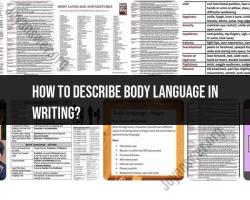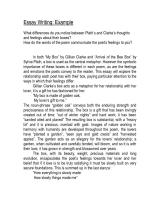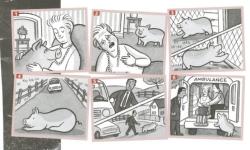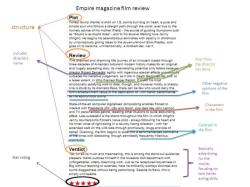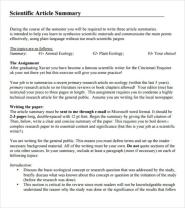How to rewrite a paragraph without plagiarism?
Rewriting a paragraph without plagiarism involves expressing the original ideas in your own words while maintaining the meaning and integrity of the content. Here's a step-by-step guide on how to do it effectively:
Read and Understand the Original Paragraph:
- Carefully read and comprehend the paragraph you want to rewrite. Understand the main ideas, concepts, and the author's perspective.
Take Notes:
- Jot down key points, phrases, and important details from the original paragraph. This will serve as your reference while rewriting.
Paraphrase and Use Synonyms:
- Rewrite the paragraph using your own words. Focus on conveying the same ideas and information in a different way. Replace specific words and phrases with synonyms, but ensure that the overall meaning remains intact.
Rearrange Sentence Structure:
- Change the sentence structure by rearranging words and sentences. This helps in making the content distinctly different from the original while retaining the essence.
Change the Tone and Style:
- Alter the tone and style of the paragraph to make it your own. For example, if the original paragraph is formal, you can make it more conversational or vice versa.
Cite the Source if Necessary:
- If you're including unique or specialized information from the original paragraph that is not common knowledge, it's best to cite the source to give credit to the original author.
Read Aloud and Compare:
- After rewriting, read the new paragraph aloud to ensure it flows well and makes sense. Compare it with the original to make sure you haven't inadvertently copied the structure or language.
Use Plagiarism Checker Tools:
- You can use plagiarism checker tools or software to verify that your rewritten paragraph is sufficiently distinct from the original. These tools can identify similarities and help you make further adjustments if needed.
Seek Feedback:
- If possible, ask someone else to read both the original and your rewritten version to ensure that you've successfully avoided plagiarism and maintained the original meaning.
Practice and Refinement:
- Rewriting is a skill that improves with practice. Continuously work on refining your ability to rephrase and restructure content while preserving its essence.
Remember that the goal of rewriting is to create original content while drawing upon existing ideas. It's essential to respect intellectual property rights and avoid any form of plagiarism. When in doubt, always provide proper attribution to the original source if you're quoting or closely paraphrasing specific information.
Rewriting Without Plagiarism: Tips for Creating Unique Content
Plagiarism is the act of copying someone else's work and passing it off as your own. This includes copying text, ideas, or even sentence structure from someone else's work. Rewriting is a process of taking someone else's work and expressing it in your own words. This can be done to avoid plagiarism, to create original content, or to make a text more understandable or engaging.
Here are a few tips for rewriting without plagiarizing:
- Understand the original text. Before you start rewriting, make sure you understand the original text completely. This means reading it carefully and taking notes on the main ideas and supporting points.
- Put it in your own words. Once you understand the original text, start rewriting it in your own words. This means using your own sentence structure and vocabulary. Be careful not to simply copy and paste the original text, even if you change a few words or phrases.
- Cite your sources. Even if you are rewriting a text in your own words, it is important to cite your sources. This shows that you have done your research and that you are not trying to pass off someone else's work as your own.
Paraphrasing for Originality: Techniques to Rewrite Without Plagiarism
Paraphrasing is a specific type of rewriting that involves taking someone else's ideas and expressing them in your own words. This can be done by changing the sentence structure, vocabulary, and word order of the original text.
Here are a few tips for paraphrasing for originality:
- Read the original text carefully. Make sure you understand the main ideas and supporting points of the text.
- Put it in your own words. Use your own sentence structure, vocabulary, and word order to express the ideas of the original text.
- Compare your paraphrase to the original text. Make sure that your paraphrase accurately conveys the ideas of the original text.
- Cite your source. Even if you are paraphrasing a text, it is important to cite your source.
Ethical Writing: Avoiding Plagiarism While Rewriting
It is important to avoid plagiarism when rewriting. Plagiarism is unethical and it can have serious consequences, such as failing a class, getting fired from a job, or even being sued.
Here are a few tips for ethical writing while rewriting:
- Understand what plagiarism is. Plagiarism is the act of copying someone else's work and passing it off as your own. This includes copying text, ideas, or even sentence structure from someone else's work.
- Cite your sources. Even if you are rewriting a text in your own words, it is important to cite your sources. This shows that you have done your research and that you are not trying to pass off someone else's work as your own.
- Be honest and transparent. If you are not sure whether or not something is plagiarism, it is always better to err on the side of caution and cite your source.
By following these tips, you can rewrite content ethically and avoid plagiarism.



